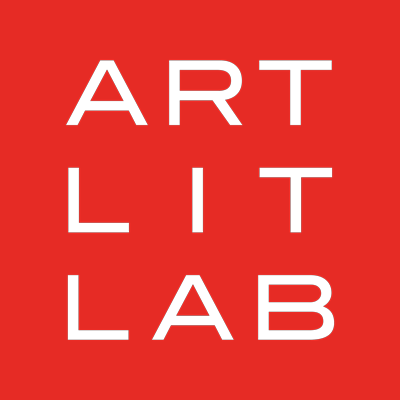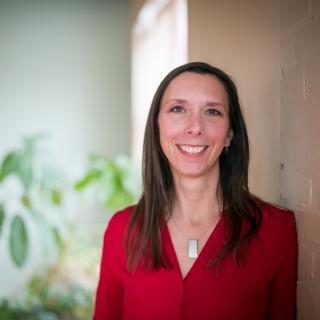STILL: The Art of Noticing (Phaidon Press, 2024) is one of those books that you want to give to everyone you love. It’s an art book, or what used to be called a coffee-table book, that is immediately accessible and welcoming. Mary Jo Hoffman’s photos can only be described as stunning. The unique beauty of her work comes from giving living things—gathered near her homeplace in Minnesota, or from the landscape of her surprise second-home in southern France—time on stage to shine authentically. And after looking through Mary Jo Hoffman’s lens, you may never move through your surroundings in the same way again.
This first published collection of large-scale photos are based on the artist’s decade-long daily practice of noticing the world in season and then staging and sharing one single image online at STILL blog. The new book, which immediately went into a second printing after selling out, includes short essays that put more of Mary Jo herself in the spotlight, which is a real treat. They offer enlightenment earned through a methodical but open-hearted practice and remind us of the simple but sneaky truth that paying attention is the only tool needed for seeing beauty everywhere.
Mary Jo Hoffman will be giving a talk about STILL: The Art of Noticing on Saturday, October 19, 2024 at 4:30 PM at Art & Lit Lab. This event is organized in partnership with the WI Book Festival, FlakPhoto Projects, and the Wisconsin Science Festival.
Mary Jo Hoffman responded to the following questions via an email interview conducted by Jessica Becker in September 2024.
Jessica Becker: “Have nothing in your houses that you do not know to be useful, or believe to be beautiful” is a quote that you reflect on in the book. Is there one useful and one beautiful thing that particularly speaks to the living conversation you are having today or this week with your chosen world?
Mary Jo Hoffman: I have one item that I use almost every day and that makes the world feel right every time I pick it up. It’s the Niwaki Rattan-Grip garden snips that my husband bought me last year as a gift. If you are a gardener and haven't heard of Niwaki, do yourself a favor and look them up, although you will not be doing your checking account a favor.
On a larger scale, I spent the last couple of years trying to remove all plastics from my house, as much for aesthetic reasons as for environmental ones. I would say I'm about 90% of the way there. (Interestingly Ziploc bags are proving to be my kryptonite.) The reason I mention it is that the aesthetic difference has been enormous. Without shiny plastic and primary colors around, the house feels so much more grounded and situated in its environment. Because everything in it is made from natural elements, there is less clash between the inside and the outside. I can feel the difference every day. And I highly recommend it.
JB: You have been very generous in explaining your process and technique. Are there other art forms that you experiment with privately or aspire to try?
MJH: Yes! I have been doing collage for as long as I have been doing my STILL photography project. I have kept visual journals for the last 25 years. Interestingly, although I feel I have found my visual voice with STILL, I have never found a similar unique-to-me voice with collage. I have published some of my collage work, and it does get acquired by art consultancies, but I do not have a consistent body of work that is recognizably mine. Recently my husband and I became empty nesters, so I will probably be adding one more creative practice to my routine. And I haven't decided yet if it will be painting, printmaking, or collage. There is an idea I would like to experiment with on canvas or paper, based on the concept of 72 micro-seasons that I wrote about in my STILL book. In some form or another, that will probably be my next foray into a new medium.
JB: It will be "the time of migration" according the 72 micro-seasons you’ve outlined in the book when you are in Madison on October 19th. What can people expect to see or learn about if they come to the event? How do you prepare for events in different places?
MJH: Madison in October! What a treat. I am a Badger alum. And I vividly remember how beautiful Madison is in October with those clear blue skies, crisp cool mornings, and the low-angle light glinting off the lakes. Madison in the fall always reminds me of Sand County Almanac by Aldo Leopold, which was a very influential book for me when I was in my 20s. It is where I first learned about sandhill cranes, and now 40 years later I have a resident pair of sandhill cranes living in my backyard each summer.
When I visit other states to give workshops, I will often bring bags of dried botanicals and nature bits with me to have attendees play with. Of necessity, those will all be from my local trails in Minnesota. But I do like to study the local flora and fauna of the places I visit so that when I am lecturing I can use local references instead of my northern ones. It's just a little extra effort and people seem to appreciate the gesture. After the workshops, I always try to spend at least a few hours in a local park gathering bits to bring home and add to my growing collections of seedpods, pine cones, leaves, beach rocks, etc.
JB: You wrote that showing up every day to make art makes you an artist. Do you remember the first time you called yourself an artist? How did it feel?
MJH: It really is interesting that so many creatives and makers have a hard time calling themselves artists. I don't understand why that is so, but it was true for me as well. I think I started calling myself an artist when my photographs started selling beyond just friends and family. Now I have a very well-received book, released by the world's largest publisher of art books, and I'm selling my images several times a week. And despite all of this, it feels as if I am intruding into a forbidden realm somehow when I call myself an artist.
JB: It must surprise you to be a role model for the art of noticing, speaking for all the other weirdos who feel out of sync with the "real world." Do you have any advice for yourself or a list of ways to get back on track when you are having an "off" day?
MJH: Firstly, I am a bit of a rebel and really do cherish being a weirdo. That has been true since I was a child. Being a noticer, however, began early in the life of my STILL project around 12 years ago. One of the biggest rewards of this daily practice has been how centering it is to spend at least a little part of every day being a noticer. To be wholly present, however briefly, with my attention focused outward on whatever surrounds me has proven to be the best mindfulness practice I could have conceived. I give lectures about this. There is a lot of research to support it. But I can also say, anecdotally, for myself it has become the heartbeat of my days, and I can’t imagine who I would be anymore without it.
JB: “It is in the atmosphere of such intimacy that the word love makes any sense.” This quote from STILL reminded me of when I first read Braiding Sweetgrass by Robin Wall Kimmerer and her invitation to have a more engaged and reciprocal relationship with the land where we live. I feel like your work speaks to this desire, this longing, that many of us feel. Do you have any thoughts you’d like to share on the concept of home, or if you’ve read Kimmerer’s work, on ideas in that book?
MJH: Oh goodness, Braiding Sweetgrass! What a gift that book has been to the universe! I was about five years into doing STILL blog when I finally found Braiding Sweetgrass, and the feeling of recognition I felt while reading that book was profound. And then I realized that my STILL project had simply led me back to the knowledge that Indigenous people had always had. And we had lost. But there are a lot of weirdos like you and me out there now so perhaps we will find our way back.
On this topic I have so many thoughts. I recently gave a lecture at the 92nd St. Y on the topic of Placefulness—which is a term I borrowed from Jenny Odell’s wonderful book How to do Nothing. Placefulness is the opposite of—and I believe an antidote to—the placelessness we are all feeling from too much life online. My husband and I call this attitude “going narrow and deep.” When air travel became affordable, and remote work a possibility, we watched as nomadic lifestyles took off and we sensed that something was wrong with that as a solution what had come before, even though we agreed that work life before remote work was not a good solution to our problems either. We had a hard time articulating our feelings. But then, I started doing STILL. And we moved to a tiny rural village in southern France. And we went very narrow and deep in that unremarkable, un-Instagrammable, place. And we realized then that globetrotting to world capitals and remote beaches could be as disconnected as staying online in one place. Neither one is a substitute for spending enough time in one place to understand how it has formed you, and who you are as a result with your sustained interaction with it. Contemporary nomadism often strikes us as running away from things as much as toward them.

